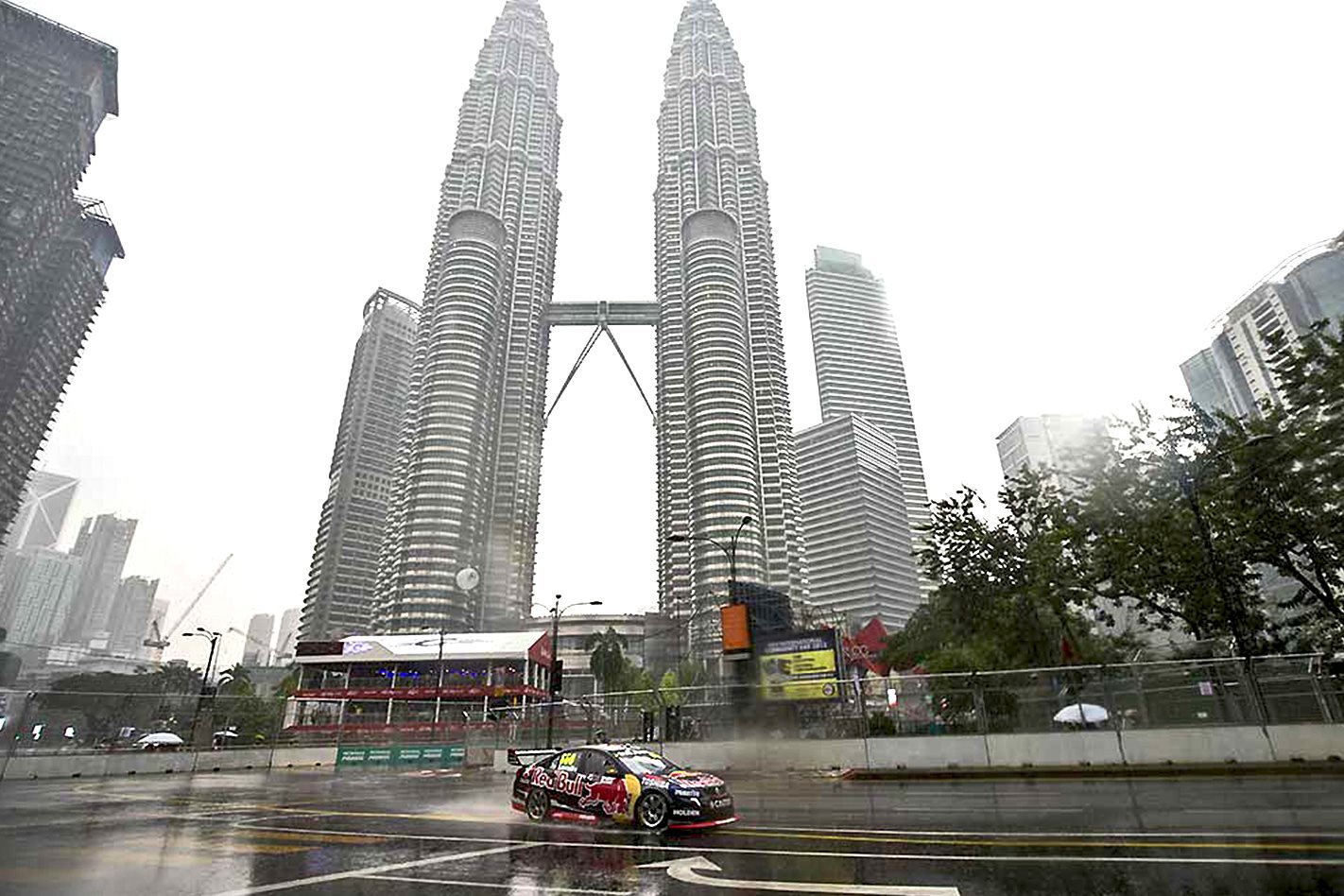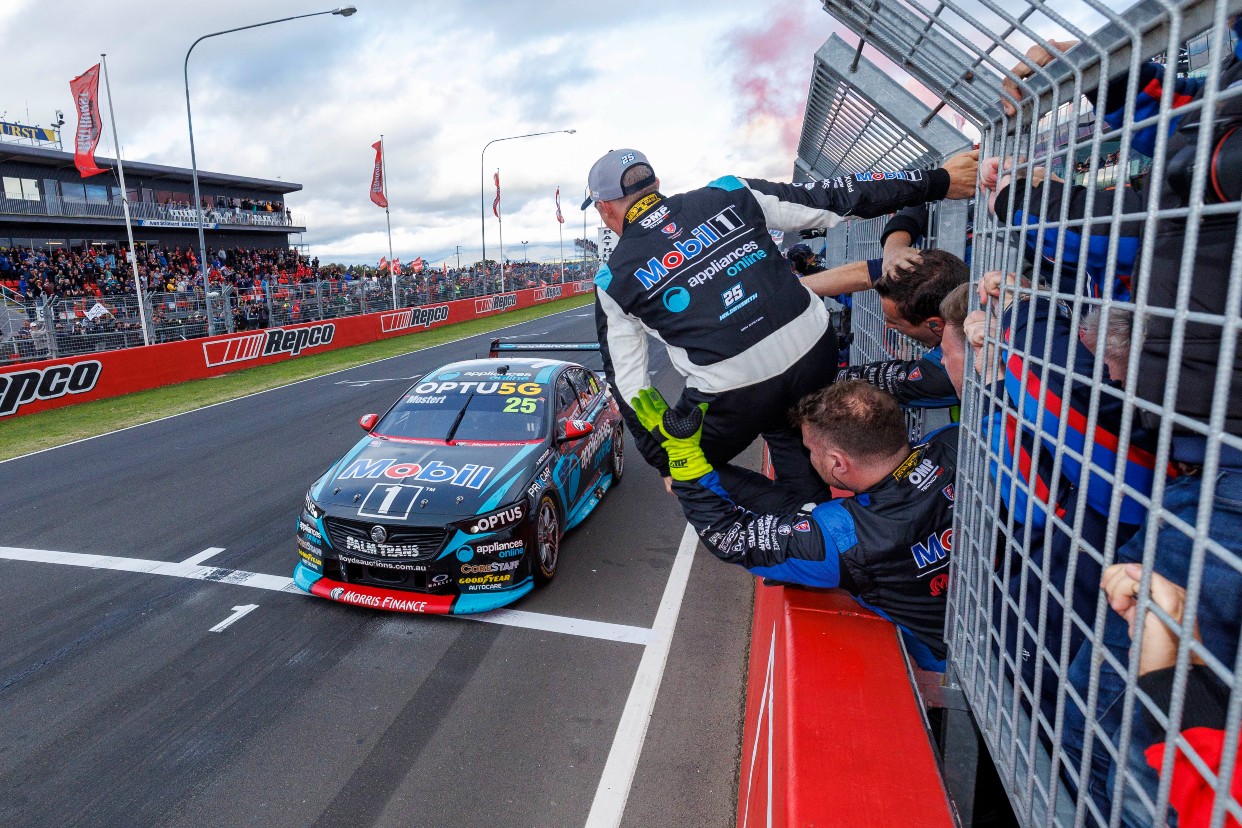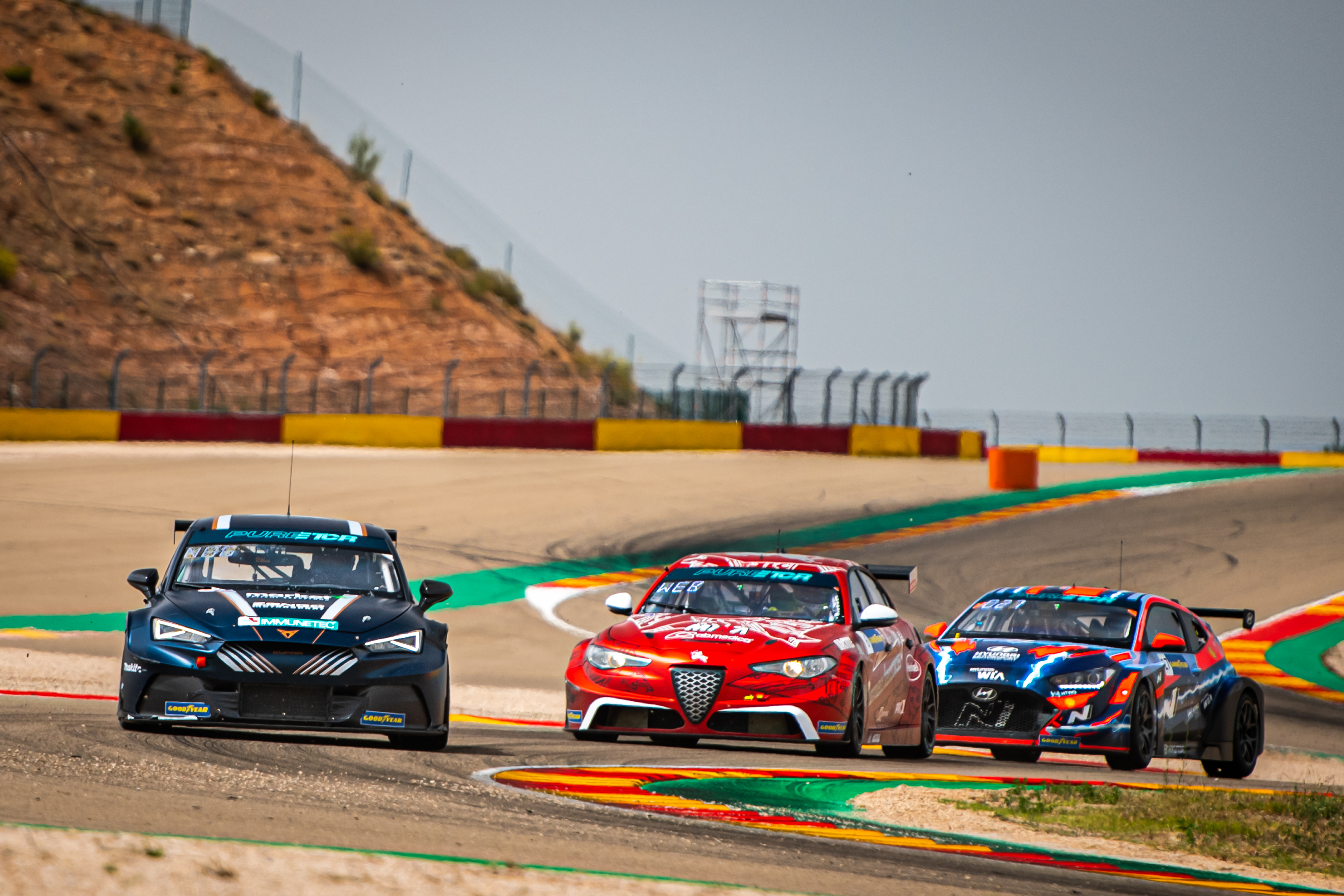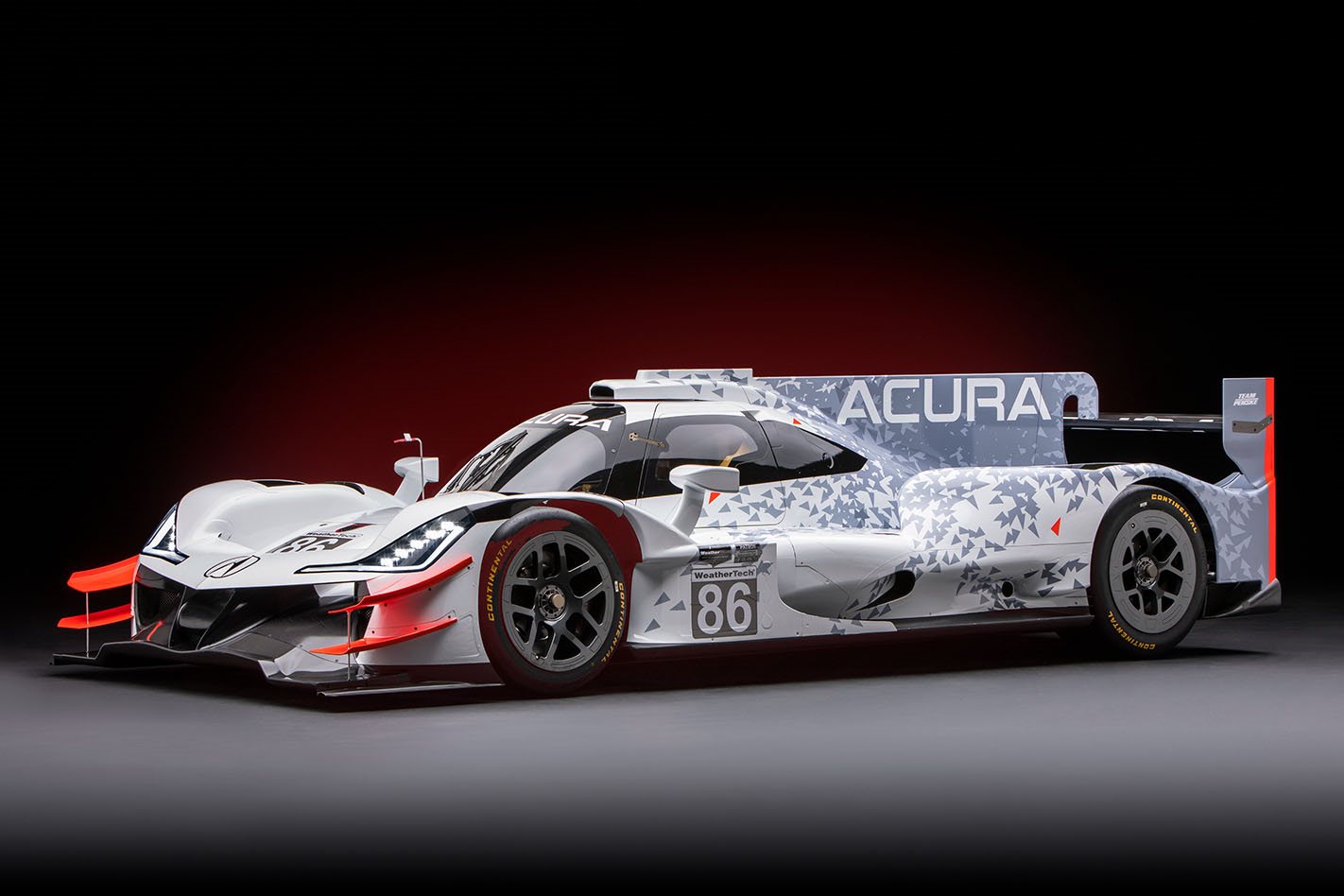POLITICS: V8 Supercars rises above KL street race kerfuffle
DISPUTES over the ownership of the street race in Kuala Lumpur won’t derail the mooted off-shore championship round for V8 Supercars in August, insists the category chief executive James Warburton.
A group backed by the Malaysian Government has taken control of the organisation of the street race, held on a tight 3.2km layout which runs past the landmark Petronas Towers in the capital.
Planned for August 12-14 are four 100km V8 Supercars championship races.
V8 Supercars has a four-year agreement with the Malaysian organisers of the KL City Grand Prix, which after legal threats has been renamed the KL City 400. (Formula One claims to hold ownership of the grand prix nomenclature, although try telling that to international speedway, tennis and snooker bodies…)
The fight over ownership has taken place out of the public eye, but there are a few signs of turmoil and change – the KL event’s original website has suddenly disappeared and its Twitter and Facebook accounts neutralised.
The ownership fracas hasn’t thrilled V8 Supercars, but Warburton is confident the event is still on track, with the right people in charge.
Warburton told Wheels: “We’ve been aware of some shareholding issues since the last event. We have commitments going forward and believe the shareholders are close to resolution and the event will proceed.”
Agreements were locked and loaded around the time of last year’s inaugural street race – effectively an exhibition. But in the world of Asian business and politics, permanency of agreements is a matter of interpretation.
More positively, the new KL race stakeholders were represented in Sydney at a V8 Supercars sponsorship forum recently and will also be at the Clipsal 500 in Adelaide this weekend.
Five V8 Supercars “raced” on the KL street layout last year in a raucous demo to help rev up interest.
Two Boeing cargo planes will fly the 26 racecars and equipment to KL in August.
F1: Pre-season testing springs no surprises but a little hope
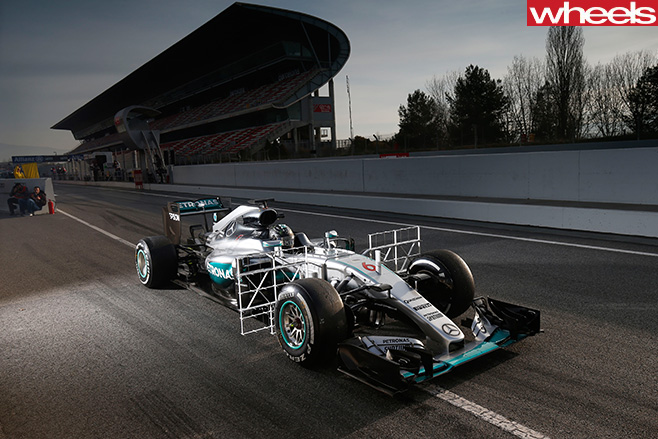
But testing in Spain ultimately brought us little more than that awful feeling that 2016 may be much like last year, which in turn was a whole lot like 2014.
The Silver Arrows were quick and reliable at Catalunya; the signs are that Mercedes has improved on an already fast car. The Mercs also did lots of laps, 700 laps, without issues. Also impressively fast were the cars from the red team, which historically likes to give supporters hope by uncorking some flash lap times. They did just that with Pirelli’s new ultra-soft tyres. “What I feel is that it is a very good step forward,” Sebastian Vettel raved after his first day in the car in Spain. Kimi Raikkonen was less ebullient, pulling up short of executing a few cartwheels…
Only a brave man would use the pre-season testing times to forecast a pecking order in the championship proper.
Teams have different schedules, targets, fuel loads and tyre compounds. Some used their regular drivers; others put their test pilots to work. And all guard their true potential like Bill Shorten hides a sense of humour.
But McLaren Honda showed a deep commitment to saving the earth’s non-renewable resources. The team aimed at completing 4000km but managed a little more than a quarter of that distance. Reliability issues have not yet been sorted, conceded Honda’s new F1 chief Yusuke Hasegawa.
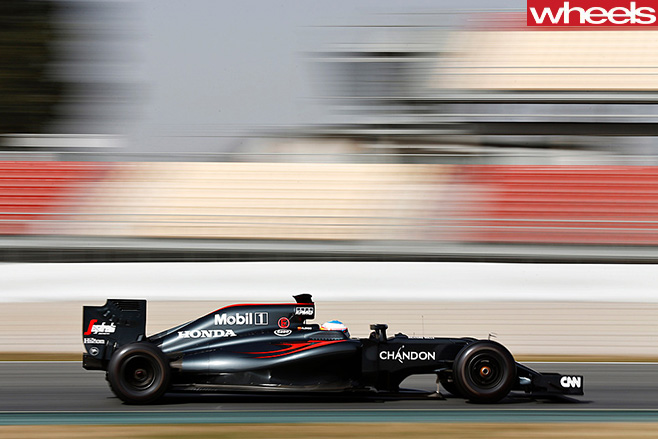
And what of our Daniel Ricciardo and Red Bull Racing?
After a 2015 of poor reliability and endless squabbles with engine supplier Renault, the signs for this year are more positive.
The Bulls are still powered by a Renault donor power unit, but rebadged as TAG Heuers. The name change may have wrought a minor miracle: the cars have been running without worrying signs of mechanical fragility.
“The team is positive; we’re all feeling like we’re in a good place,” declared the Australian Dental Association’s poster boy.
But that place will be well behind the Mercs, apparently, at least in the opening four flyaway GPs. Ricciardo concedes: “I don’t expect to be on their level at the first few races”.
“I’m 100 per cent not going to be surprised if they get a one-two, not only in Melbourne but for the first four races,” Ricciardo said.
Ricciardo predicts he’ll be fighting with Williams, Force India and Toro Rosso early in the season for the lower points-paying positions, but is confident Red Bull will be more competitive when the circus returns to Europe.
Four crucial days of the final pre-season test start tomorrow at Catayunya.
But we’ll be waiting until qualifying at Albert Park to better know who might kick butt in 2016. Or do we know already?
WORLD SUPERBIKES: Rea takes two from two while Westie shakes up Supersport
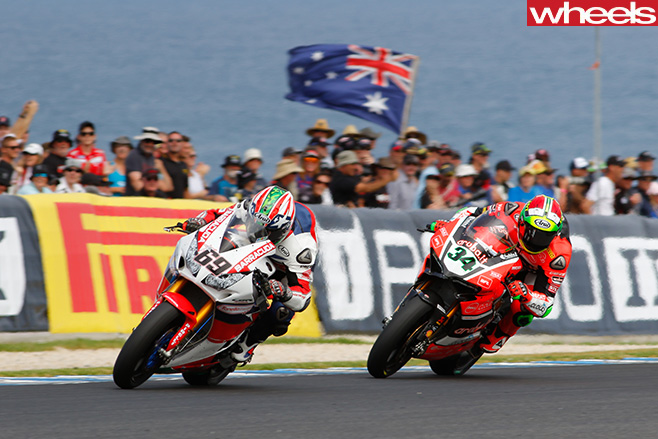
Both heat races were thrillers with up to seven riders in the mix for much of the journey.
But the Kawasaki star from Northern Ireland proved he will again be a fierce contender, while his team-mate and rival Tom Sykes clearly has work to do.
Ducati, Honda and the new Yamaha were at the pointy end too.
Series runner-up last year, Chaz Davies, pushed hard to claim second in the Saturday race, but dropped his Ducati on the final lap of the Sunday contest.
Holland’s Michael Van Der Mark plucked an enterprising third out of Saturday’s race and followed up with second the following day aboard his Honda. A win can’t be far off.
His new teammate, ex world MotoGP champ Nicky Hayden, put his experience to fine use to run towards the front at the Island. He was a possibility for a podium on Sunday but was pipped in the run to the line by Ducati’s Davide Giugliano.
The highlights of the World Supersport race included Swiss rookie Randy Krummenacher taking a surprise victory, beating another new face, Italian Federico Caricasulo, and Queensland wildcard Anthony West to the top step of the podium.
“It was such a good result for a small team we threw together at the last minute,” said West, who is hoping the performance might secure him a full-time ride. He was relentless in his charge from 12th, though it was obvious his Yamaha lacked the straight-line urge of the Kawasaki and Honda that beat him to the line.
An exploding tyre decked reigning champion Kenan Sofuoglu in the closing stages when he looked set to give the race a huge shake.
GT: Walkinshaw names its drivers for championship and endurance season
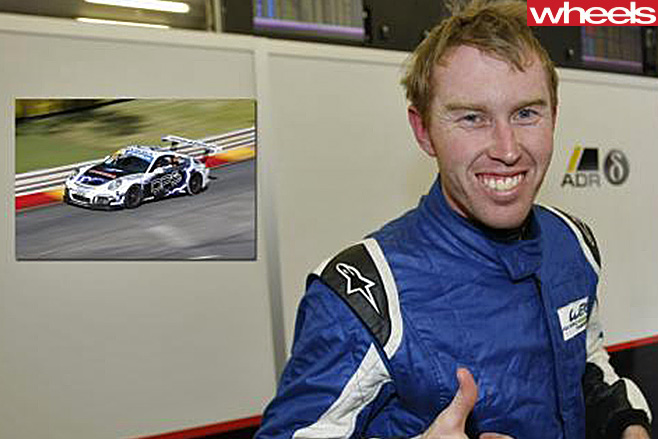
The fast and experienced Martin returned home in 2015 eight years of racing open wheelers and prototype sportscars in England and Europe and is looking forward to joining the Melbourne-based Walkinshaw outfit steering the new Porsche 911 GT3 R.
“We spoke to Adrian (Burgess) quite a bit through last year, about V8s and other options,” said Martin. “But when the Australian GT opportunity came up, we knew it was the way to go.
Martin is aware of the Walkinshaw name’s amazing history in international sportscar racing all the way to Le Mans.
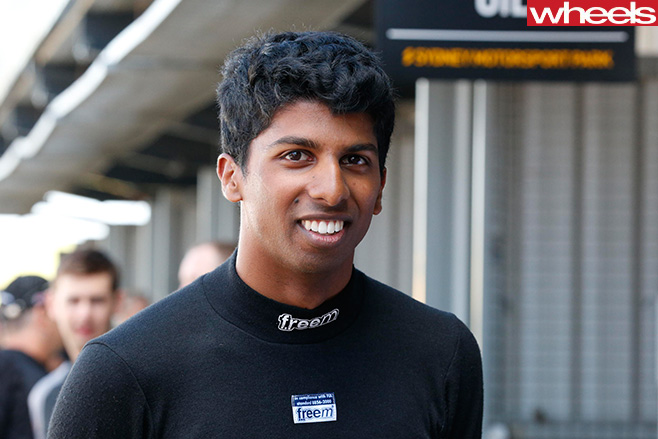
Martin will also take up full-time driving duties in Australian GT sprint series with a yet-to-be-announced co-driver. Walkinshaw GT3 will debut the Porsche from round three at Perth’s Barbagallo Raceway in May.
F1: New elimination-style qualifying delayed
Plans for a new elimination-style qualifying this season to replace the old elimination-style qualifying have been farcically delayed due to issues with Formula One’s computer programming.
The confusing new format was set to be introduced in Melbourne, despite criticism from some drivers and bewilderment from fans.
Bernie Ecclestone has confirmed the delay because his technical boffins cannot get the software and graphics tuned and ready in the tight time frame. The word is the new system won’t be ready until the Spanish Grand Prix in May at the earliest.
This will force F1 to stick with the old format for the first four races at least before switching over.
The new format is based around drivers being eliminated at 90-second intervals in each of the three qualifying sessions. In the current system, bunches of seven are sent to the pits at the end of each of the first two sessions.
F1 teams are usually resistant to changing the rules mid-season, and it won’t surprise if the World Motor Sport Council decides to delay the introduction of the new system until 2017.
By then they may have decided it’s a pretty dumb idea and that there are more pressing innovations to bring to F1.
Now, for those who don’t fear brain damage, here’s my attempt to explain how the new format, if it ever happens, is supposed to work…
Three qualifying phases remain, as before. Q1, Q2, Q3.
Broadly, after a settling-in phase in each session, the slowest driver is eliminated at 90-second intervals during the three qualifying segments, eventually leaving two drivers to battle it out for pole position in Q3.
Specifically, Q1 is 16 minutes long and for all 22 cars (provided the McLarens have made it out of the pits). After seven minutes, the slowest driver is eliminated, with this process continuing every 90 seconds until the chequered flag. So seven drivers are out, with 15 progressing to Q2.
Q2 is of 15 minutes duration. After six minutes, the slowest is flicked. And so it continues with the slowest afield sent to the pits every 90 seconds. This reduces the qualifiers to eight for the final 14-minute shootout.
Five minutes into Q3, the culling continues. Yep, after every 90 seconds the slowest on track is dispatched until two drivers – quite possibly Lewis Hamilton and Nico Rosberg – are left to fight for pole in the last 90 seconds.
INDYCAR: F1 door slams and another opens – Alexander Rossi crosses to IndyCar
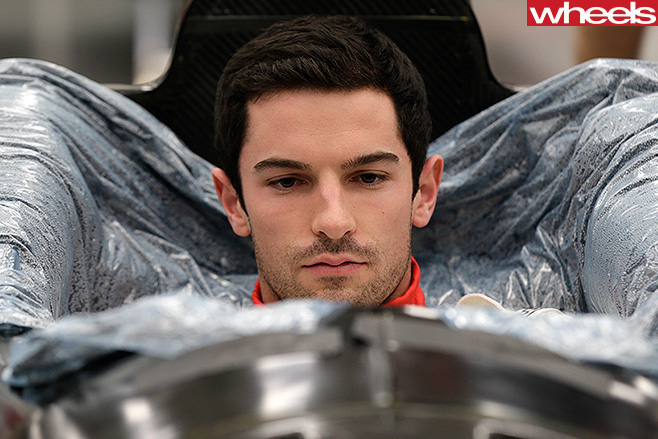
The 24-year old Californian didn’t do much wrong in limited opportunities with the Marussia team in F1 towards the end of last year, where he started in five grands prix. He was hoping for a deal with the new American F1 team, Haas, but the phone didn’t ring.
Opting for Indy Cars is a massive gamble for a young driver with dreams of locking down a solid career in F1. Even though Indy Car racing arguably demands serious versatility with its ovals long and short, street races, and road courses, very few drivers are plucked from American open wheeler racing to F1. Fewer still make a memorable go of it. Not Sebastien Bourdais, Scott Speed, Michael Andretti…
With his strong background in formula cars in Europe including finishing second in the 2015 GP2 Championship, Rossi could be an asset for Andretti, although his lack of oval racing experience is an obvious deficiency.
“As a racer through and through, I cannot wait to get started; our goal is to be competitive immediately at the first race in St. Petersburg,” said the confident Rossi.

